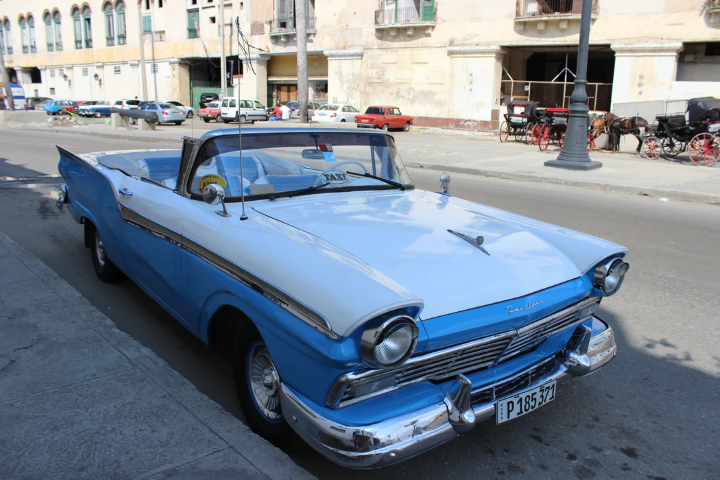 Nothing beats the feeling of the wind in your hair, a good playlist, and the open road. Convertibles are a great driving experience all around, but despite that thrilling experience, many still wonder if they are safe vehicles.
Nothing beats the feeling of the wind in your hair, a good playlist, and the open road. Convertibles are a great driving experience all around, but despite that thrilling experience, many still wonder if they are safe vehicles.
With convertible car insurance being a bit higher than car insurance for other cars and the speculation over its safety limits, some potential owners are on the fence about buying one. The following details on the vehicle can help you figure out what is best for you.
What types of convertibles are there?
Once it gets warm outside and it is not raining, riding around with your top down can be a hair-raising experience, literally. However, there are different types of convertibles to choose from. Below are some descriptions of different styles of convertibles that you can pick when shopping for one.
- The Classic Convertible: This version of a convertible will be very similar to many of the variations mentioned below, but they are the originals. These can be found as collectibles or leisure vehicles instead of as commutes.
The 1947 Mercury Convertible Coupe is the perfect example of a classic car. It is rare with a boxed frame and requires specialized maintenance because of its age. Other examples are the Porsche 911 and the TVR Chimaera.
- The Four-Seater Convertible: The four-seater is more compatible for those who travel with more than one person regularly. Though these vehicles still usually only have two doors, they are ideal for those who have children or groups of friends they travel with consistently.
Cars like the Mini Convertible and the Jaguar XK have rear seats, but they are small even for little children. An Audi A3 or Volkswagen Golf is more suitable for families and groups of friends.
- The Sports Car Convertible: This convertible is more than likely a two-seater with rear-wheel drive. They are equipped with an engine similar to race cars, or at least faster than engines in regular streetcars.
Some examples of a convertible sports car are the Mazda MX-5 or the BMW Z3. Due to the type of engines in these cars, the price tends to be higher than other convertibles.
- The Cruiser Convertible: A perfect example of a cruiser convertible is a Ford Mustang. These styles are ideal for people who enjoy cruising down the road and watching the world pass by.
Mustangs are normally faster than other vehicles, so you can still catch some speed while on the road in one. Cruisers are more affordable convertibles. Another example of one is the BMW 6-Series.
- The Folding Hardtop Convertible: This variation is usually a two-seater. The only thing that puts it in its own category is the fact that it has a folding hardtop. Due to the heaviness of the folding hardtop, the vehicle has to almost always be at a standstill when opening or closing the top.
The added weight prevents extreme speed like a sports car, and the complexity of the folding system takes up more space in the vehicle. Though it is heavier, this vehicle is more secure when closed because it is more difficult to break into than a soft-top convertible. Some examples are the Mercedes-Benz SLK and the Volkswagen Eos.
- The Luxury Convertible: Though all convertibles can look luxurious at any given moment, some are specifically categorized as luxury vehicles.
These have softer leather, multi-layered fabric roof, smooth driving, and thick carpet under your feet. Some templates for a luxury convertible are a Bentley Continental GTC and the Rolls-Royce Dawn.
- The Fabric Sunroof Convertible: Some of the most affordable convertibles are ones with a fabric or soft top because the roof mechanics do not take up much space.
The fabric on the top may come back just far enough to where it gives a feel of having a sunroof. The Fiat 500C and the Citroen DS3 Cabrio are cars that have a fabric sunroof.
- The SUV Convertible: An SUV convertible is not as easy to come by as other versions. These vehicles usually have a soft top, and older designs like a Jeep Wrangler do not have an electric folding system. A more modern version is the Range Rover Evoque Convertible.
Are convertibles safe?
The Insurance Institute for Highway Safety’s (IIHS) online vehicle rating tool does not rate all convertibles as high risk. As a group, these vehicles are not more likely to get into automobile crashes, but there are specific types of convertibles that are involved in more accidents than other models.
Ultimately, how cautious you drive determines if any vehicle will be safe or not while operating it.
Will my insurance rates increase if I buy a convertible?
When deciding your insurance rate, your provider will take into consideration your driving history, credit rating, homeownership status, age, marital status, and the type of vehicle you are insuring.
Of course, like any other sports car, a convertible sports car may receive a higher insurance rate than other variations. So this should be taken into consideration when choosing a type of convertible to purchase.
Some negative factors that insurance providers consider with a convertible are that soft tops are more likely to be stolen or vandalized, hardtops are heavier (which can make accidents more deadly), and as a whole, convertibles are more expensive to buy.
On the bright side, there are ways to save money on your car loan when purchasing a convertible so you can also save on insurance with these instances. Here are lists of pros and cons when considering a convertible:
The Pros of Owning a Convertible
- Better visibility while driving
- Versatile vehicle
- More headroom
- A classic, sporty style vehicle
The Cons of Owning a Convertible
- More expensive vehicles
- Noisy vehicles
- More susceptible to leaks when it rains
- Car’s security can be compromised
- Expensive maintenance in the interior
One last thing to note when considering how insurance rates differ with convertibles is the risk of being ticketed. Convertibles catch attention more than other vehicles, so if you are driving recklessly, then law enforcement is more likely to spot the driving behavior.
Individuals who have a good number of moving violation tickets on their driving record are considered being high-risk drivers in the eyes of insurers. High-risk drivers are automatically given higher insurance rates. However, driving safely can diminish this factor.
 Imani Francies writes and researches for the insurance comparison site, TheTruthAboutInsurance.com. She earned a bachelor of arts in film and media and specializes in various forms of media marketing.
Imani Francies writes and researches for the insurance comparison site, TheTruthAboutInsurance.com. She earned a bachelor of arts in film and media and specializes in various forms of media marketing.










